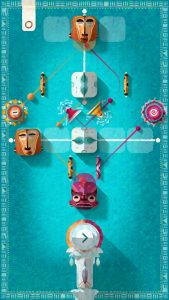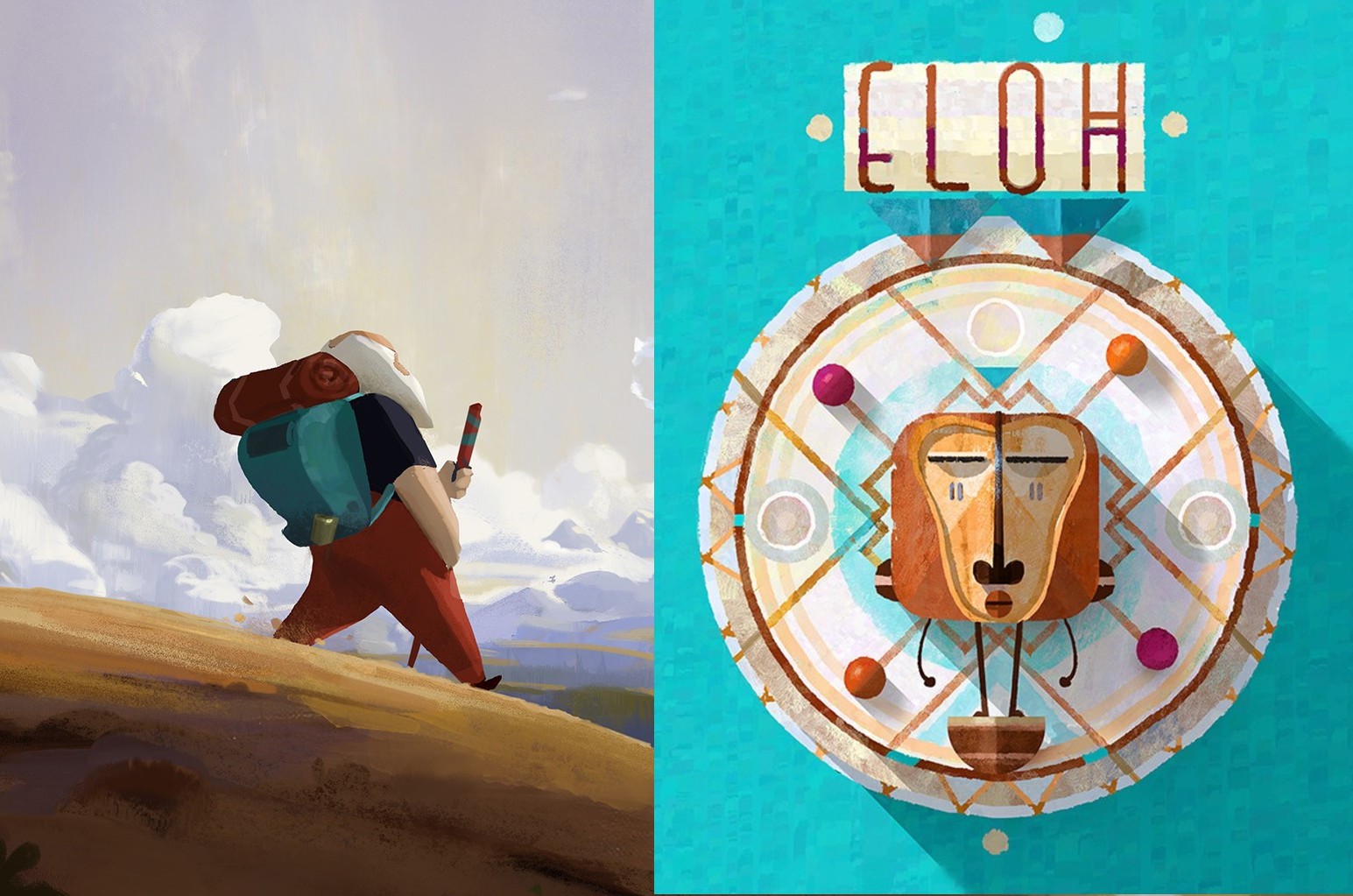Last weekend the Pasadena Convention Center in California was packed as the inaugural LightBox Expo celebrated artists in a variety of visual arts, ranging from illustration to gaming. With programming consisting of panels, demos, and portfolio reviews, LightBox also gave artists a venue to exhibit and sell their art as prints or other types of merchandise.
Among them was Lip Comarella, visual developer and production designer on this year’s Apple Design Award winner, the musical puzzle game ELOH.

ELOH’s art team also included Simon Griesser (animation and video) and Daniela Leitner (concept art).
Two Award Winners
Developed by a collaboration between Christian “jcstranger” Baumgartner, Broken Rules, and Salon Alpin (co-founded by Comarella), ELOH is a musically-infused game featuring abstract creatures in peaceful worlds. According to App Store Preview, the game’s puzzles revolve around moving blocks to bounce balls along different paths, which also “builds a soothing beat.”
It’s also a mobile title that boasts having no ads or paywalls.
“It’s more about relaxing, finding your peace,” Comarella said when describing the mobile game to attendees who visited his booth. “If you’re stressed out, consider ELOH.”
The mobile title isn’t Comarella’s first game, or even the first time that he’s worked on an Apple Design Award winner. Comarella said he had been invited to collaborate on the art side of Broken Rules’ Old Man’s Journey, a narrative game that won the Apple Design Award in 2017.
“It was crazy, really unexpected,” Comarella said of both ELOH and Old Man’s Journey winning the same honor from Apple.
Comarella observed that while ELOH had been created to “have what we like,” it was also made to “stand out in the App Store.”
He compared the two award-winning games, saying that they had different goals.
“I like both,” said Comarella. “I think they’re two types of games that are equally interesting.”
ELOH is an Apple Design Award Winner 2019 because of its amazing team: @jcstranger, @LipComarella, @scntfc, @v01pe_, @mcloister, Daniela Comarella and Simon Griesser. Keep creating astounding work! pic.twitter.com/UGgC9Eb7XS
— Broken Rules (@brokenrules) June 4, 2019
Percussive Art in ELOH
His LightBox booth included a showcase of ELOH‘s art.
“I like the small animations in between levels,” Comarella said. “The characters are my favorite, they’re fun, they feel like good friends.”
To create that imagery, Comarella said that he “designed straight up from sketch to final asset in Photoshop, then brought it into Unity.”

Comarella shared that the orange character on the mountain was his favorite character design in ELOH. “We started with this one,” he added.
Comarella explained that he looked a little bit at African and Polynesian masks for design inspiration in ELOH, and drew further inspiration from around the world.
He described the game’s visuals as rooted in the “aesthetics of percussion and tribal art.”
“Found it fit well with the idea of meditation and peace,” Comarella said.
Finding the Beat
He also shared that the aesthetics of drums and tribal art were “connect[ed] to…the sense of making music.”

Image of ELOH gameplay.
Music is a key feature in ELOH. The game’s official website mentions it multiple times, even telling players to “let the groove guide you through 85 levels.” Baumgartner told App Store Preview that he’s also a drummer, which influenced the focus on music in ELOH.
Comarella shared that the game started with a template of music. He added that the team had to figure out game mechanics first, then make sounds for each of those mechanics.
Composer and sound designer Andrew “Scntfc” Rohrmann (Oxenfree, Afterparty) joined development later to craft the full score. He had also previously scored Old Man’s Journey.
According to Comarella, the music was made with actual instruments, “with wood and brass.”
An Extensive Portfolio
After studying at the University of Applied Arts Vienna, Comarella has worked in a wide range of media that have won other awards besides the honors ELOH and Old Man’s Journey received. He and his fellow Salon Alpin co-founder Simon Griesser directed the Annie Award-winning commercial Rang-tan. Comarella has worked on stop motion, papercraft, and even a project for the StarCraft II World Championship Series. At the moment, he’s working on a Netflix production.
But Comarella talked about the appeal of game development too.
“I really enjoyed making a game because you can get so close to your audience,” Comarella told a LightBox attendee. “It’s so rewarding seeing people interact [with your work].”




